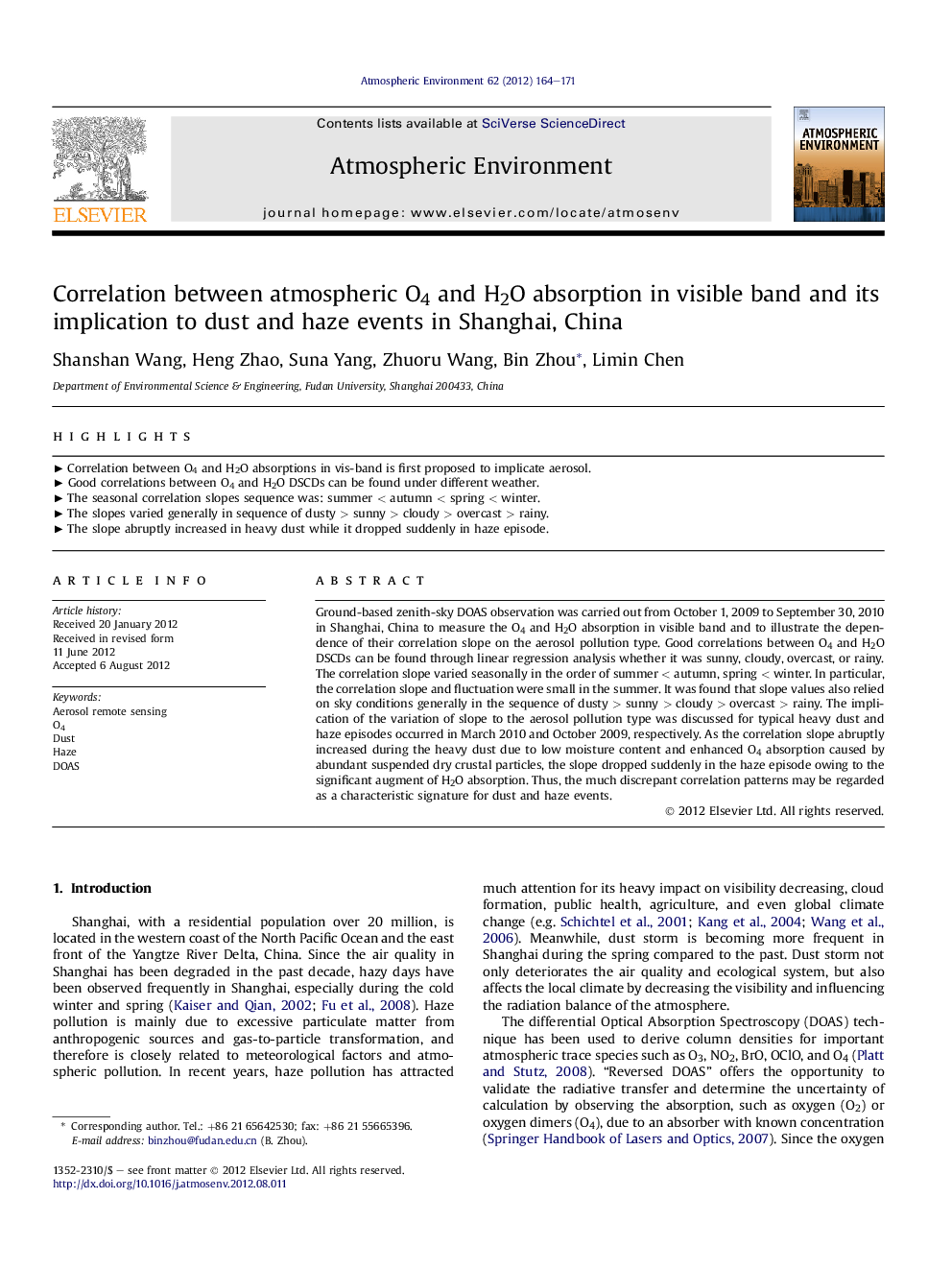| Article ID | Journal | Published Year | Pages | File Type |
|---|---|---|---|---|
| 4438646 | Atmospheric Environment | 2012 | 8 Pages |
Ground-based zenith-sky DOAS observation was carried out from October 1, 2009 to September 30, 2010 in Shanghai, China to measure the O4 and H2O absorption in visible band and to illustrate the dependence of their correlation slope on the aerosol pollution type. Good correlations between O4 and H2O DSCDs can be found through linear regression analysis whether it was sunny, cloudy, overcast, or rainy. The correlation slope varied seasonally in the order of summer < autumn, spring < winter. In particular, the correlation slope and fluctuation were small in the summer. It was found that slope values also relied on sky conditions generally in the sequence of dusty > sunny > cloudy > overcast > rainy. The implication of the variation of slope to the aerosol pollution type was discussed for typical heavy dust and haze episodes occurred in March 2010 and October 2009, respectively. As the correlation slope abruptly increased during the heavy dust due to low moisture content and enhanced O4 absorption caused by abundant suspended dry crustal particles, the slope dropped suddenly in the haze episode owing to the significant augment of H2O absorption. Thus, the much discrepant correlation patterns may be regarded as a characteristic signature for dust and haze events.
► Correlation between O4 and H2O absorptions in vis-band is first proposed to implicate aerosol. ► Good correlations between O4 and H2O DSCDs can be found under different weather. ► The seasonal correlation slopes sequence was: summer < autumn < spring < winter. ► The slopes varied generally in sequence of dusty > sunny > cloudy > overcast > rainy. ► The slope abruptly increased in heavy dust while it dropped suddenly in haze episode.
